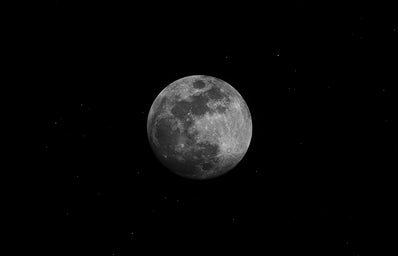The moon and its phases are important to the holy month of Ramadan and to other traditions in the Islamic religion. The shape of the crescent moon has even become synonymous with the religion, although the legitimacy is disputed.
So, let’s learn about how the moon does more than sit pretty in the sky…at least for Muslims…
The Lunar Calendar
Ramadan is devoted to reflection, fasting, and prayer. Those who observe Ramadan know that the phase of the moon determines the beginning of the holy month.
The moon can be credited for the unity it fosters in the Islamic community. The search for a clear image of the moon to see if the month has commenced and the updates my mom receives from the community on WhatsApp or Facebook amp up the anticipation.
Ramadan begins with the sighting of the crescent, and its end is marked by the following crescent, which leads Muslims into celebration for Eid al-Fitr.
Ramadan is determined this way because the Islamic calendar is a lunar one, unlike the commonly used solar Gregorian calendar created by Pope Gregory XIII in 1582.
Eid celebrations also depend on the sighting of the moon as mentioned above. Eid al-Fitr celebrates the conclusion of Ramadan, while Eid-al-Adha is associated with the Hajj pilgrimage that takes place every year in the 12th month of the Islamic calendar.
The religion remains intertwined with nature and uses God’s creations for unity and worship. In following the lunar calendar, Muslims emphasize the connection between tracking time and natural celestial cycles.
Symbol of Islam?
Historically, the crescent moon is used to symbolize the god Sin, or is associated with the Greek goddess Artemis, and her Roman counterpart Diana.
The religion of Islam originated in Arabia. In Arabia, travel along the desert trade routes was done by night, thus any navigation was dependent on the moon and stars. However, the symbol is believed to have entered the Islamic sphere due to the Ottoman Turks who became the primary Islamic nation in the 12th century.
Presently, the crescent is a decoration added to all kinds of Islamic architecture, calligraphy, and art—secular and religious alike.
Debates have taken place that Allah is another name for the lunar entity, Lah or Hubal. Islam’s use of the lunar calendar and crescent moon imagery have been used as ammunition for this notion. However, Allah being any entity other than the same God present in the other Abrahamic religion is a fallacy and is offensive to Arab Christians who call God Allah.
Many Muslims reject the use of the crescent as a symbol since historically, the religion has no symbol. Instead, Islamic groups used solid black, white, and green flags to identify themselves with the faith. But apart from the complications of associating the crescent moon as a symbol of Islam, it is undeniable that the moon means a lot to people of the faith, especially in thinking about the elusive passages of time.
What Role Does the Moon Play in Scripture?
The moon is mentioned in the Qur’an as a sign of God’s power and mighty creation.
The lunar cycle is used as a metaphor for the cycles of life and faith; the phases mark how faith can and should fluctuate and demonstrate the cyclic nature of life. Qur’an also speaks on how the moon is light itself that measures stages so you will know the number of years and keep count of time.
Metaphors are used in the Qur’an about how the moon’s phases can be likened to human life and existence and life’s brevity.
Finally, Islam is a religion supporting the pursuit of knowledge, which includes the study of celestial bodies. Astronomy and the observations made from the moon hold historical significance in Islamic civilization, and Muslim scholars have been able to make substantial contributions to the field of study.
There are lots of reasons that the moon is up in the sky, with its etches and craters—it is there to help, to teach us time, and follow us home sometimes.


